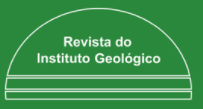Land use implications on soil erosion at São Pedro (SP)
DOI:
https://doi.org/10.14295/derb.v42.751Keywords:
Erosion; Susceptibility; Statistical method; Morphometry; Integrated analysisAbstract
Erosion is a process long associated with natural factors, such as lithology, soil type, slope morphology, and rainfall. The anthropogenic actions interfere with these dynamics, and the improper practices of land use may accelerate this process. In this context, this study aimed to evaluate the implications of land use and its influence on the genesis and distribution of the erosive features of the Espraiado watershed at São Pedro (SP), considering four intervals in 1962, 1972, 2000, and 2020. The land use maps and erosive features were built on orthophoto, fieldwork, and an integrated method of correlation and validation between erosive features and land use, using a potential statistical index of erosion. The results demonstrated that the classes of exposed soil and pastures are more susceptible to erosion at all times and a reduction in the total area of erosive features since 2000, due to the increase in the forest coverage, consolidated urban area, and forestry. Finally, the greatest susceptibilities of the exposed soil and pasture classes are also associated with the classes of concave curvatures and slopes between 20% and 40%.
Downloads
Downloads
Published
How to Cite
Issue
Section
License
Copyright (c) 2021 Evandro Daniel, Bianca Carvalho Vieira, Tiago Damas Martins

This work is licensed under a Creative Commons Attribution 4.0 International License.
Política de Acesso Livre:
A revista Derbyana oferece acesso livre ao seu conteúdo. Toda a coleção da Revista é disponibilizada de forma gratuita em https://revistaig.emnuvens.com.br/derbyana e no Portal de Periódicos Eletrônicos em Geociências – PPeGeo (http://ppegeo.igc.usp.br), resultado de parceria entre a Sociedade Brasileira de Geologia e o Serviço de Biblioteca e Documentação do Instituto de Geociências da Universidade de São Paulo.




















